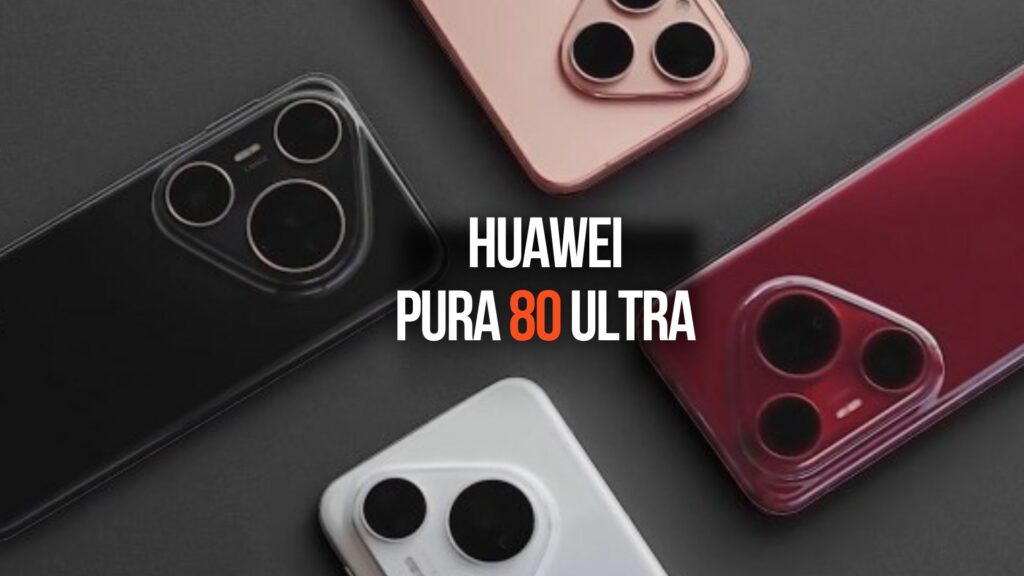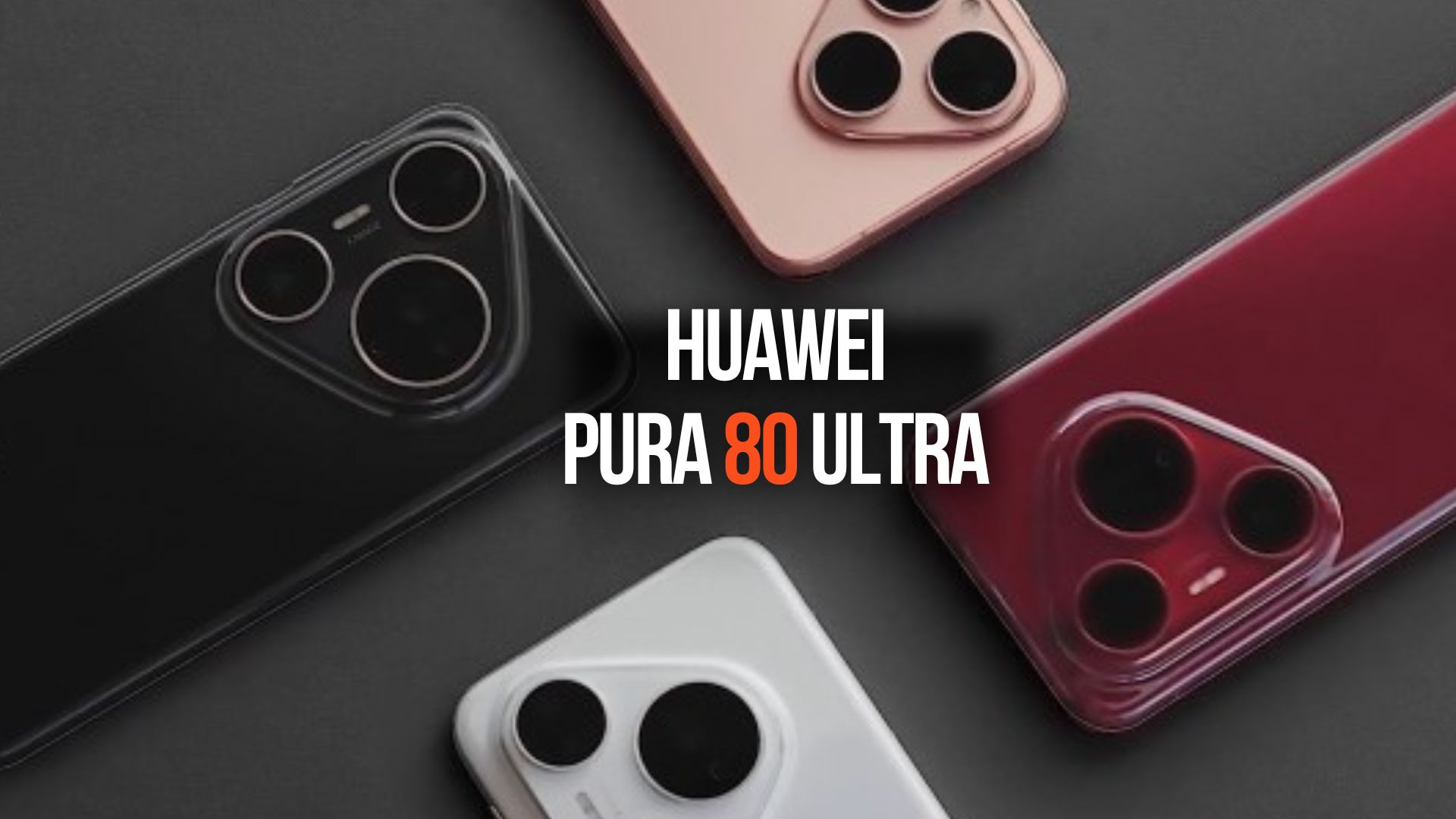Huawei continues to push the boundaries of mobile photography with its Pura 80 Ultra. Known for innovation in camera hardware, the company takes things a step further in this flagship, particularly in the telephoto department. Combining an advanced main sensor, versatile telephoto lens design, and enhanced ultrawide and selfie capabilities, the Pura 80 Ultra is a photography-centric smartphone with performance to match.

Summary Table
Feature |
Specification / Detail |
|---|---|
Main Camera |
50MP, 1.0”, f/1.6-f/4.0, OIS, Laser AF, dual-pixel PDAF |
Telephoto Camera |
50MP, 1/1.28”, f/2.4-f/3.6, 83-212mm, OIS, PDAF |
Ultrawide Camera |
40MP, f/2.2, 13mm, PDAF, macro support (2cm) |
Front Camera |
13MP, f/2.0, 21mm, PDAF |
Video Recording |
4K @ 60fps on all cameras, H.265/H.264, HDR Vivid only |
Special Features |
Variable aperture, TCG-HDR, Steady Shot mode |
Manual Control |
Pro mode with full aperture control and RAW support |
Official Website |
Key Highlights
-
Revolutionary telephoto setup with a dual-lens-single-sensor design
-
Next-gen 1-inch 50MP main sensor with variable aperture
-
40MP ultrawide lens with autofocus and macro capabilities
-
13MP front camera with ultra-wide 21mm lens and autofocus
-
Video recording across all cameras at 4K 60fps
-
Manual aperture control and Pro mode for enhanced shooting flexibility
Innovative Telephoto Camera System
The standout feature of the Huawei Pura 80 Ultra is its unique telephoto setup. Instead of using two separate lenses, Huawei introduces a shared dual-lens-single-sensor design. This system uses a prism that shifts between two different lens paths, operated by a tiny motor rated for 180,000 actuations. A second prism at the end of the periscope assembly redirects the light toward a large 1/1.28” sensor, placed at an unusual angle to the phone’s body.
This approach saves internal space while offering more zoom flexibility than traditional single-lens telephoto systems. The focal lengths are specified as 83mm and 212mm, offering 3.7x and 9.4x optical zoom from the main camera perspective. However, in practice, the viewfinder defaults to a 10x shortcut, and there are inconsistencies in EXIF data and field of view at the same zoom levels, pointing to the system’s complexity.
Main Camera: High Performance with Pro Features
The main camera features a 50MP sensor sized at 1 inch, a rarity in smartphones. This sensor includes Triple Conversion Gain HDR (TCG-HDR) technology, allowing it to capture three different exposures per shot, improving dynamic range, especially for HDR video and photos.
Its variable aperture ranges from f/1.6 to f/4.0, with seven intermediate steps. In Auto mode (Photo mode), it typically defaults to f/2.0, but in Pro mode, users can manually select apertures. This allows more control over depth of field for portraits or macro-style shots.
Portrait quality is strong, offering detailed facial rendering and well-handled skin tones. The optical depth of field at wider apertures adds natural bokeh, although Portrait mode’s artificial blur can sometimes be excessive.
Ultrawide Camera: Macro Capabilities and Detail
The 40MP ultrawide camera provides a 13mm equivalent field of view and comes with autofocus, making it useful not just for landscapes but also for macro shots. It can focus as close as 2cm from the lens, delivering highly detailed close-ups. Color consistency and sharpness are well-maintained even at the edges.
Selfie Camera: Wide and Focused
Despite its modest 13MP resolution, the front-facing camera is one of the widest in the market at 21mm. With autofocus support, it’s especially useful for group selfies or dynamic vlogging. It also supports 4K 60fps video recording, a rare feature among front cameras.
Video Capabilities and Limitations
All four cameras support 4K at 60fps, but there are some caveats. The telephoto lens does not switch between focal lengths during video recording 10x zoom uses the 3.7x lens digitally cropped. There’s no 4K 120fps slow-motion option or 24fps cinematic frame rate. Additionally, HDR Vivid is the only HDR format supported Dolby Vision or HDR10+ are absent.
Huawei uses H.265 as the default video codec, with H.264 available as an option. Stabilization is available in all modes and enhanced in the Steady Shot mode, though this mode limits resolution to 2.7K.
Sample Performance: Daylight and Full-Resolution Shots
In daylight, the main camera excels with excellent dynamic range and balanced saturation. White balance is generally good but can sometimes be slightly off. Detail levels are high, though the processing does occasionally give a digital or slightly sharpened look.
The 50MP full-res mode provides even more detail but takes longer to process, making it suitable for users who intend to manually post-process images.
Frequently Asked Questions (FAQ)
Q: Does the Huawei Pura 80 Ultra support 4K video on the front camera?
A. Yes, it supports 4K at 60fps on all cameras including the front.
Q: Can you switch focal lengths in video mode on the telephoto lens?
A. No, the telephoto lens does not switch between its two focal lengths during video recording.
Q: What kind of stabilization does the phone offer?
A. All video modes are stabilized, and a Steady Shot mode is available at 2.7K resolution for enhanced stabilization.
Q: Is the main camera’s variable aperture automatic or manual?
A. It is automatic in Photo mode (typically fixed at f/2.0), and manual in Pro mode.
Q: What zoom levels does the telephoto lens offer?
A. It provides 3.7x to 9.4x optical zoom, with software suggesting a 10x shortcut.
Click HERE For More
